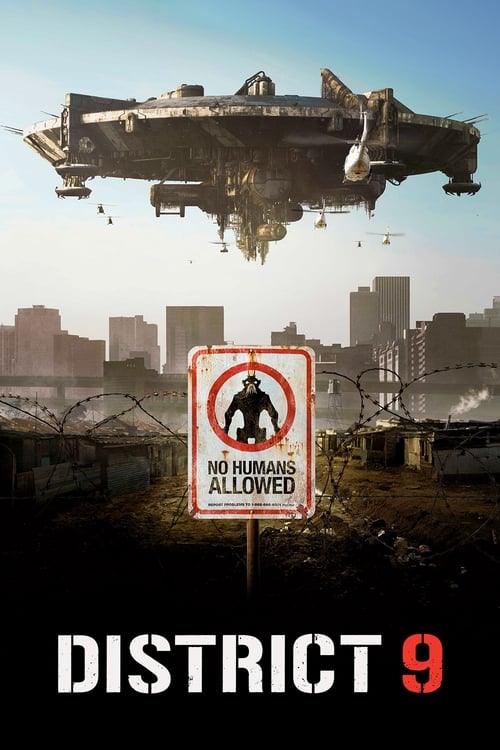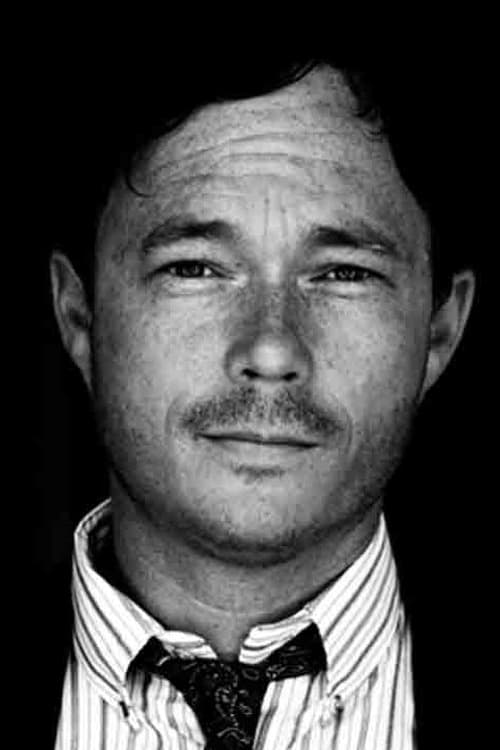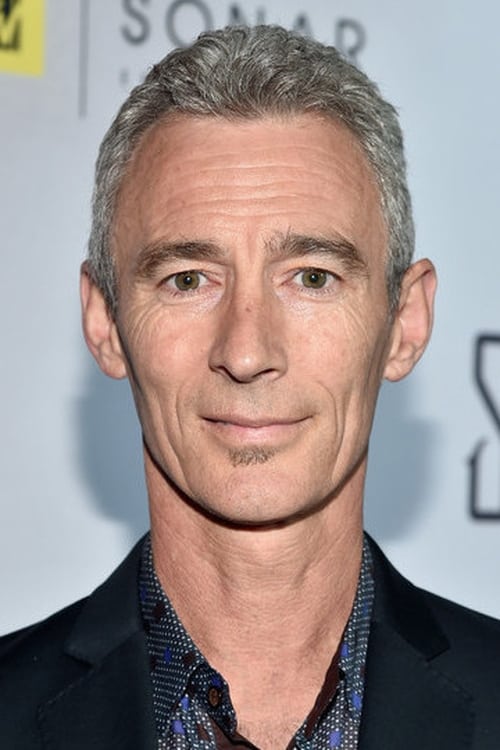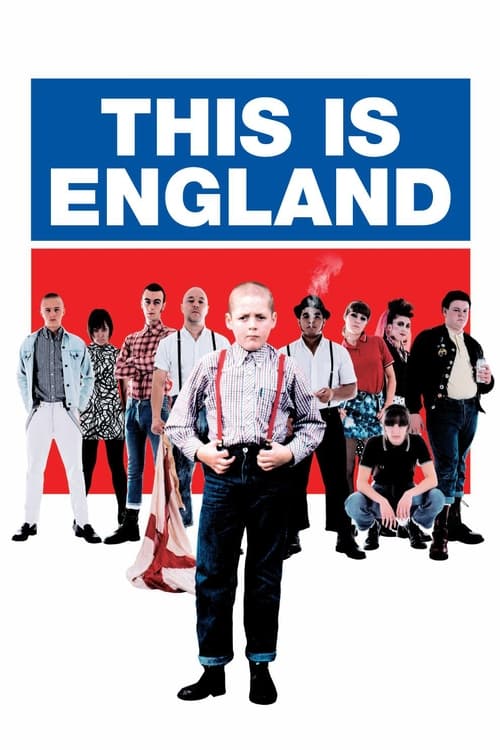
District 9
Thirty years ago, aliens arrive on Earth. Not to conquer or give aid, but to find refuge from their dying planet. Separated from humans in a South African area called District 9, the aliens are managed by Multi-National United, which is unconcerned with the aliens' welfare but will do anything to master their advanced technology. When a company field agent contracts a mysterious virus that begins to alter his DNA, there is only one place he can hide: District 9.
Dialogues from Movie District 9
Quotes from Movie District 9
Sound Tracks from District 9 by Clint Mansell
The Human Element
The Human Element by Lorn, Background underscore during the initial alien reveal.
Elysium
Elysium by Clint Mansell, Used during pivotal moments showcasing the alien and human tension.
Download App
Memorable Scenes from Movie District 9
The Arrival of the Prawns
As a massive alien spaceship hovers ominously over Johannesburg, the scene unfolds with people gathered, awestruck yet fearful. Tension hangs in the air as military forces prepare for an unknown encounter. The striking visuals of the rusty, malfunctioning ship symbolize the desolation of the aliens who are later referred to as 'Prawns.' This moment starkly establishes the socio-political divide as the aliens are relegated to slum-like conditions, creating an unsettling juxtaposition of hope and despair.
Context: The opening scene sets the tone for the entire movie, showcasing the initial fear and curiosity surrounding the arrival of the aliens in human society, while hinting at the ensuing conflicts.
MNU's Operation Begins
As the MNU (Multi-National United) team prepares to evict the Prawns from their makeshift homes, we see the cold, bureaucratic nature of their operation. The harshness of their tactics contrasts sharply with the vulnerability of the alien inhabitants. The chilling visuals, including the use of military vehicles and weapons, deepen the audience’s sense of unease and foreshadow the chaos that will follow.
Context: This scene is critical in showcasing human greed and prejudice, highlighting how the aliens are treated as mere resources rather than sentient beings.
Christopher Johnson's Revelation
In a moment of quiet desperation, Christopher Johnson reveals to Wikus a key piece of information about the spaceship and its technology. This scene is incredibly poignant as it shows Christopher's hope for escape and his willingness to share vital knowledge. The emotional weight is mirrored in Wikus's shifting expression, going from confusion to realization. This pivotal moment invites viewers to empathize with Christopher's plight.
Context: This exchange marks a turning point for Wikus, gradually shifting his allegiance and revealing the complexity of his character.
Wikus Transforms
After being exposed to alien fluid, Wikus undergoes a painful transformation into one of the Prawns. The gripping visuals of his body morphing and the raw agony he experiences serve to humanize him while simultaneously alienating him from his previous identity. His shock and fear are palpable as he grapples with his new reality, and the audience feels the heartbreak of his loss.
Context: This transformation signals the start of Wikus's journey into understanding the Prawns and challenges him to confront his prejudices.
The Fight for Survival
Wikus's desperate escape from MNU agents culminates in a tense, action-packed sequence. He fights not only for his life but begins to understand the Prawns' struggle. The high-stakes visuals, frantic camera work, and intense score amplify the urgency of the moment, encapsulating the theme of survival against oppressive forces.
Context: This thrilling action scene portrays Wikus as both a fugitive and a reluctant hero, deepening his character arc.
Tearful Farewell
As Wikus prepares to face an uncertain fate, he shares an emotional farewell with Christopher and his son. The tearful exchange captures the despair of impending separation, with Christopher pleading for help as Wikus mourns the loss of his old life. The sincerity of their bond resonates deeply, moving the audience.
Context: This moment underscores the theme of companionship amid adversity and serves to highlight Wikus's transformation.
The Climax with MNU
In a climactic showdown, Wikus stands against MNU to protect the Prawns. The visuals are gritty and intense, showcasing Wikus using alien technology with newfound prowess. The turning point comes when he realizes the strength of his alien side, fighting back not just for himself but for those he once feared, culminating in triumph over his adversaries.
Context: This moment solidifies Wikus's transformation and shifts the narrative focus toward themes of unity and freedom.
Christopher's Desperation
Christopher, in a heartbreaking moment, is devastated after realizing he cannot save his people in time. His despair and determination to return to his home planet showcase the deep emotional layers of his character. This compelling scene propels home the point that the Prawns, like humans, have dreams, hopes, and families.
Context: Christopher’s struggle highlights the very human experience of loss and desperation, echoing the film's overarching themes.
Wikus's Transformation Complete
The final moments of Wikus’s metamorphosis culminate in a heartbreaking realization as he fully embraces his alien identity. The poignant visuals of him embracing his new form create a strong emotional connection, making the audience reflect on identity and belonging. His tear-filled gaze mirrors the pain of losing his past while acknowledging his future.
Context: This transformation solidifies themes of acceptance, identity, and what it means to be 'othered' in society.
The Warning
A layered conversation between the MNU scientist and Wikus reveals the harsh truth about the experiments conducted on the Prawns, drawing parallels to historical injustices. The tension escalates as viewers grasp the darkness of humanity’s nature towards the vulnerable. The stark visuals and heavy atmosphere evoke a sense of dread and moral compunction.
Context: This scene serves as a critical commentary on exploitation that resonates beyond fiction and merges with real-world issues.
Brutality of Eviction
As the MNU forces raid the slums, chaos erupts. Prawns are treated with brutal violence, revealing humanity's ugly side. The shaky camera captures frantic movements, while the screams and destruction create a gut-wrenching atmosphere. This scene leaves viewers unsettled and questioning the morality of the oppressors.
Context: This moment starkly illustrates the film's commentary on prejudice and systemic cruelty, making it impactful.
A Mother's Love
In a touching moment, a Prawn mother tries to protect her child during the chaos of eviction. Her desperate pleas mirror the universal instinct to protect one’s family, evoking deep sympathy. The visuals of her bravery amidst turmoil amplify the emotional weight, leaving the audience to reflect on the sacrifices parents make.
Context: This scene helps solidify the theme of love transcending barriers, regardless of species.
The Realization
Wikus's discovery of his compassion for the Prawns comes to a head when he must choose between his survival and their safety. The tension peaks with a dramatic confrontation that tests his beliefs and morals. The striking visuals of his resolve represent a profound turning point not just for him but for the audience’s understanding.
Context: This moment encapsulates the essence of character development, as Wikus experiences an epiphany that challenges his original prejudices.
Diminished Humanity
Wikus sits among the wreckage of a broken machine, reflecting on his lost humanity. This somber moment is painted with a melancholy tone, showcasing his physical transformation and emotional detachment from his previous life. The profound silence emphasizes the gravity of his situation.
Context: This scene symbolizes the tragic cost of transformation and highlights the movie's exploration of identity.
The Final Stand
Wikus's ultimate stand against MNU culminates in a fierce battle, where he uses his alien technology to rescue the Prawns. The intense visuals, heart-pumping music, and his newfound confidence create an exhilarating atmosphere. This moment of bravery marks the culmination of his character arc.
Context: It represents a full-circle transformation for Wikus, who now embraces his alien identity as part of his fight for justice.
Voices of the Prawns
The Prawns’ voices raise in defiance against their oppressors, showcasing their unity and strength. The visuals of them banding together are uplifting, providing a stark contrast to earlier scenes of despair. This moment is about reclaiming agency and dignity.
Context: This powerful message emphasizes togetherness and resistance against oppression, echoing the film’s central themes.
Hope in Despair
The film ends on a chilling note as Christopher promises to return and save his race, leaving behind a transformed Wikus. The visuals of the alien spaceship soaring through the sky juxtaposed with Wikus’s sorrowful expression evoke deep emotions. The bittersweet tone captures a complex mix of hope and tragedy.
Context: This ending crystallizes the film’s themes of hope, sacrifice, and the potential for change in an unjust world.
A New Beginning
In a symbolic moment of transformation, light floods the area as the spaceship activates, representing potential new beginnings for the Prawns. The visuals are uplifting, contrasting the dark themes threaded throughout the film. This moment serves as a hint of optimism amid despair.
Context: This moment aligns with the film's exploration of resilience and hope within darkness.
The Weight of Choices
Wikus reflects on his journey amidst ruins, contemplating the choices that led him to this point. The visual imagery of destruction resonates deeply, emphasizing the consequences of human actions. The silence and his somber expression create a poignant moment of introspection.
Context: This scene serves as a catalyst for viewers to think about moral choices and the impact they can have on others.
The Unexpected Ally
An unexpected alliance forms as Wikus and a Prawn trust each other in times of crisis. Their interplay symbolizes overcoming prejudices and finding common ground. The visuals of their camaraderie emerge beautifully against a backdrop of conflict.
Context: This scene underscores the film's message about unity despite differences, illustrating that kindness can emerge in the darkest of times.
The Last Stand
In the final showdown with MNU, Wikus channels his alien abilities to turn the tide. The action sequence is intense, filled with jaw-dropping visuals as he fights for his new friends, symbolizing his complete transformation. The moment solidifies his place as a reluctant hero, making the audience root for him.
Context: This pivotal scene exemplifies character growth and the theme of resilience against oppression.
Remembering the Past
Wikus's flashbacks to happier times highlight the sharp contrast of his current plight. The nostalgic visuals evoke a sense of longing and loss, drawing the audience deeply into his emotional state. This moment hints at the price of transformation and loss of identity.
Context: This reflection deepens the audience's empathy for Wikus, showing the emotional toll of his journey.
Memories of Home
Christopher reminisces about his home planet, filled with nostalgia and hope. The visuals of his dreams contrast the bleakness of his current situation, creating a powerful emotional pull. This moment amplifies the viewer's understanding of what home means to both the alien and human experience.
Context: This adds depth to Christopher's character, illustrating his longing for freedom and belonging.
Eulogy to Humanity
In a profound moment of self-reflection, Wikus delivers a eulogy to the parts of himself he has lost. It resonates deeply with the themes of sacrifice and what it means to be human. The visuals depict his inner conflict and vulnerability, evoking a sense of sorrow and acceptance.
Context: This scene emphasizes the internal struggles faced by individuals in a time of change, deepening the film's emotional core.
A Shared Experience
Wikus and a Prawn experience a moment of shared pain and understanding. The powerful visuals of their bond transcend language, illustrating a profound connection amidst chaos. This scene captures the essence of empathy that drives the narrative forward.
Context: The emotional resonance here mirrors broader themes of connection and shared humanity.
Unmasking Fear
Wikus confronts his deepest fears as he navigates his new reality. The visuals of his struggle against overwhelming odds emphasize the significant internal conflict he faces. This vulnerable moment invites the audience to connect with his journey on a personal level.
Context: This pivotal exploration highlights the theme of acceptance and the beauty of embracing one's truth.
Final Reflections
In the closing moments, Wikus and the Prawns share a quiet moment of reflection. The peaceful visuals against the chaos of earlier scenes provide a stark contrast, evoking a sense of bittersweet acceptance. Their shared silence speaks volumes, leaving audiences to ponder the complexity of their journey.
Context: This final scene encapsulates themes of resilience, reflection, and the intertwining of lives across boundaries.
Download App










